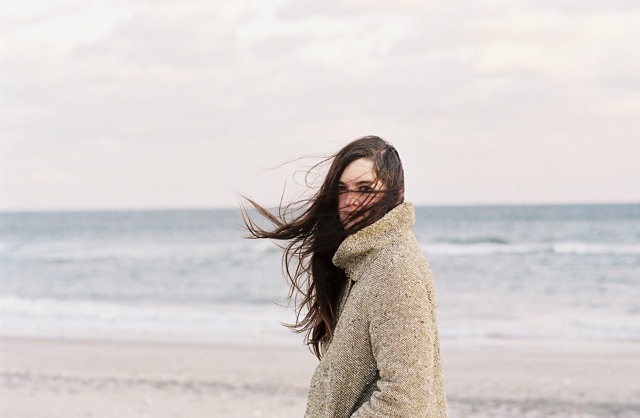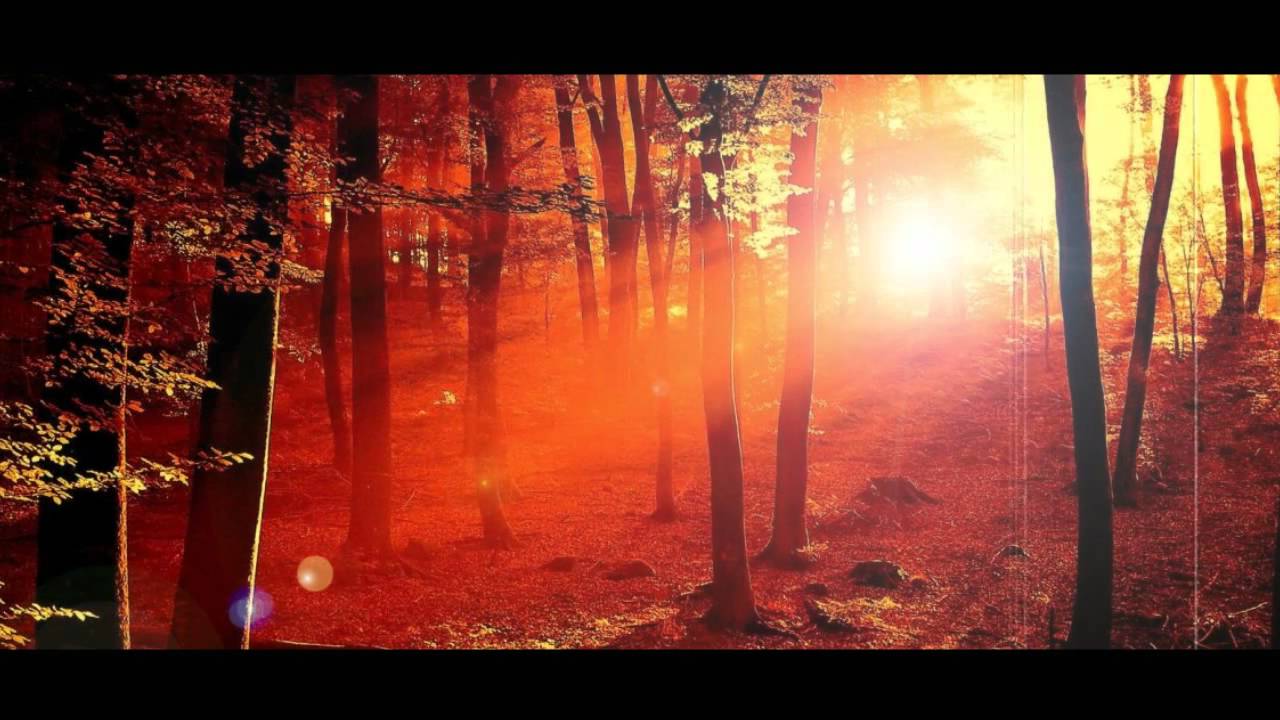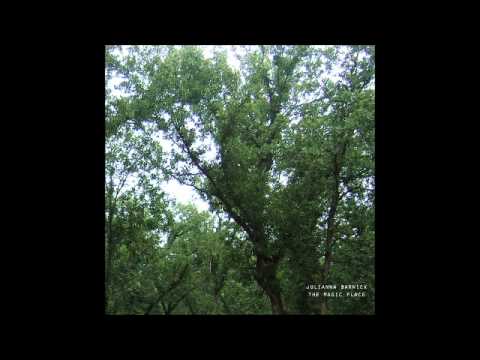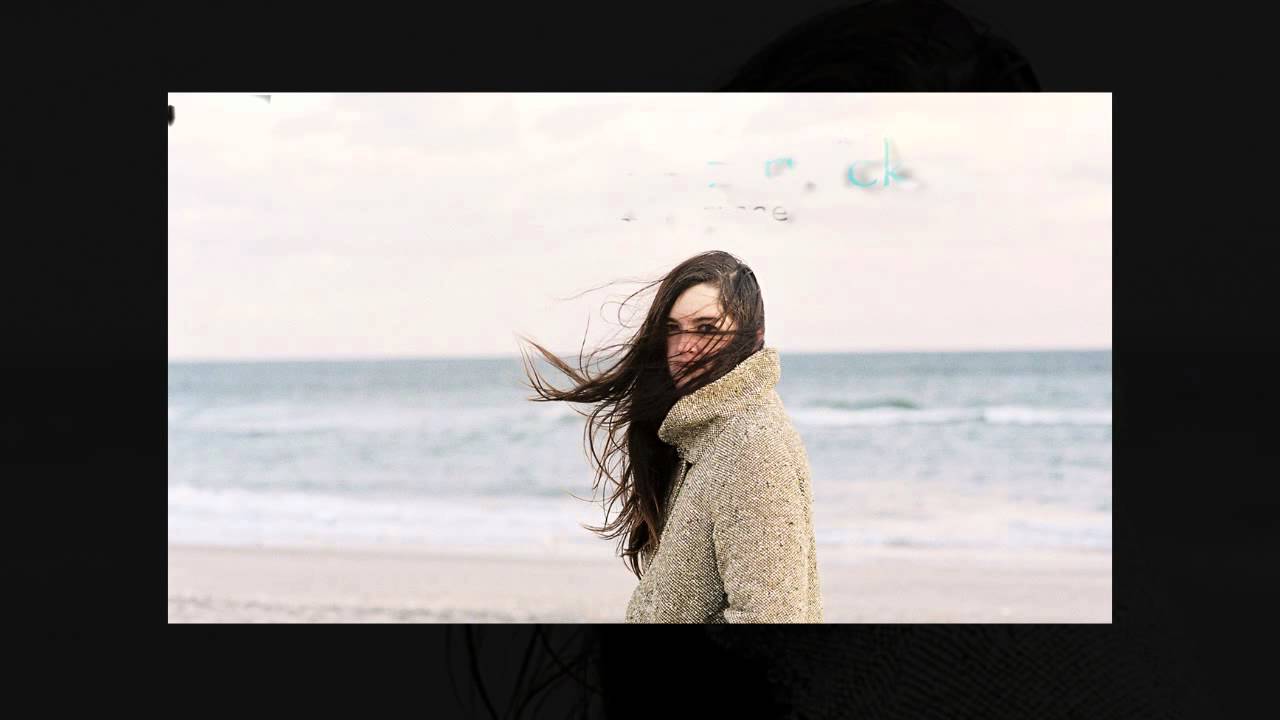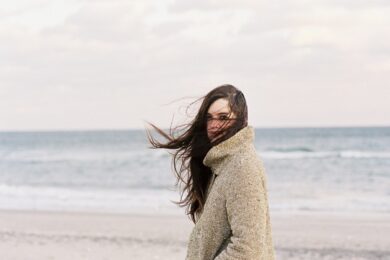There is, legend has it, a fine line between stupid and clever. There is, however, an even finer line between magical ambience and what can perhaps best be described as New Age music. It’s a matter of taste, of course: the divide between Dewa Che’s Tibetan Buddhist mantras and Mari Boine’s Sámi yoiks is small, and yet one is relegated to the shelves of glorified candle stores while the other has been remixed by the likes of Biosphere, Bill Laswell, Henrik Schwarz and Mungolian Jetset. The differences between Harold Budd’s piano meanderings and George Winston’s solo work for Windham Hill Records are arguably limited to a reverb unit and a keen sense of atmosphere over melody, yet one is considered an avant-garde pioneer and the other is largely forgotten.
Julianna Barwick ‘The Magic Place’ by GOLDSTARPRThen there’s Julianna Barwick, whose first full length album, The Magic Place, seems to dwell in a world where a heavenly choir echoes around the knave of a giant cathedral, the mating calls of whales and dolphins only just out of earshot. It offers a place of retreat, a cavernous but luxurious hideaway draped with lush velvet and full of warm, comforting colours, but it is also an intensely spiritual experience. Critics have fallen over themselves to conjure up grand metaphors that encapsulate the experience, and those who’ve immersed themselves in its all-enveloping sound draw comparisons to Le Mystère des Voix Bulgares, Brian Eno and Cocteau Twins. But perhaps the name that appears the most, over and over again, is Eithne Padraigín Ní Bhraonáin, known to her fans as Enya. It’s not a name one normally sees within the pages of The Quietus.
There is, however, one other reference that crops up with equal regularity, and weirdly it’s none other than New York’s Animal Collective. There have been few artists who have inspired comparison with both the doyenne of Celtic mysticism – also, let us not forget, the muse for Jason Connery’s Robin Hood – and the psychedelic freakery of one of Pitchfork’s chosen mascots, so it’s therefore hard not to wonder how this has happened.
Barwick’s trick is to lay heavily treated vocal lines repeatedly over one another, until she has created the sound of an entire chorus, entwining (normally wordless) phrases around one another, adding sparse instrumentation decoratively but highly effectively. Combined with the echo-laden effects, these multiple vocal tracks do indeed bear an uncanny resemblance to both Enya and her former group Clannad’s earlier work. But most of Barwick’s work is done with a loop station then, as she puts it, "tinkered" with on her computer, and it’s her love of the Moebius Loop stylings she adopts, where lines repeat themselves endlessly, sliding in and out of one another’s path, that has led to the comparisons with Animal Collective.
Julianna Barwick – “The Magic Place” from Jacob Corbin on Vimeo.
In truth, the similarities in the resulting sound are far from apparent – and perhaps only of interest to technology geeks and music theorists – so the repeated nods given by critics perhaps have more to do with the fact that they’re unable to accept that they have fallen under the spell of something which reminds them of Enya, therefore calling into question their understanding of acceptably cool reference points. It’s as though there’s a shame associated with listening to music this meditative that needs to be expunged by the namedropping of a hip, tastemaker-endorsed reference, and Animal Collective offer a suitable counterweight to the eternally unfashionable Irish woman.
Intriguingly, Barwick herself isn’t especially bothered by comparisons of any sort.
"I’m not sure what equipment Enya or Animal Collective use to record their music," she muses. "I’m sure Enya doesn’t record all of her stuff on a loop station, as she probably has her own studio and all kinds of machines and producers and what-not. Same with Animal Collective – I’m not sure how they record their stuff. But everything I’ve made so far has been bedroom recordings, essentially. I’m a big fan of Animal Collective, and growing up we had every single Enya CD, but I don’t feel particularly linked to either of them musically."
Barwick is also suitably calm about accusations that her recordings can be classified as New Age.
"The term ‘New Age’ doesn’t personally offend me or anything," she states magnanimously. "I think people try to categorise music, and maybe it catches some ears as New Age-y. I don’t mind it, but I don’t necessarily see myself as a New Age artist at all."
In fact, until recently she’d not even heard music by another name that crops up regularly when discussing her releases: the founder of modern ambient music, Brian Eno. This is despite the fact that ‘Envelop’, the mesmerising opener to The Magic Place, bears an uncanny resemblance at times to his groundbreaking Discreet Music in the way the various themes move at their own, different pace. But Barwick gently denies that it, or indeed Eno’s work in general, played a role in her own music.
"I did recognise certain themes that were similar, these kinds of cyclical patterns weaving in and out," she says of hearing his music long after she’d begun her own experimentations. "I had heard many times that my music reminded people of Eno’s work, which is a huge compliment. I think there are some similarities but I don’t think it sounds the same, just in my opinion. I like ambient music, but it’s actually not what I normally gravitate to.
"I think Eno’s work is beautiful – I love Ambient 1: Music for Airports, that record is gorgeous. I have Discreet Music, but I had only listened to it a couple of times before. But I don’t think ambient music like this is a strong influence on me."
Similarly, she was unaware of Le Mystère des Voix Bulgares, the Bulgarian State Radio & Television Female Vocal Choir whose unique sound was brought to a wider audience by 4AD Records, thanks to the patronage of Pete Murphy, in 1986. Though their technique is radically different, they share a comparable belief in the stark strengths of the human voice, both of them layering the sound to create sonic monuments of ethereal wonder.
"I wasn’t really familiar with them when I started making music the way I’m making it now," she confirms, "but I have listened to them here and there over the last few years. It’s just amazing, strong stuff – I love the intensity of their singing. I find it completely unique. It’s a very different sound than the a cappella singing I did in church or school."
Ultimately it’s not especially important what The Magic Place most sounds like, or whether these pointers were actually valuable to Barwick or not. They provide an accurate, if confusing, indication of the ground it occupies, but the truth is that Barwick’s music actually emanates from her childhood experiences singing in choirs. Born in Louisiana, she moved to Missouri when she was five, on to Oklahoma eight years later, and then finally to New York ten years ago. Throughout most of her life she has been well trained in the power of the voice, and it’s this that makes her music so focussed on the most basic of human instruments.
"I was in choirs in school, from elementary school on up," she explains. "I took voice lessons in high school where I was learning music in other languages. I definitely feel like the way I sang in choirs and with my voice teacher informed the way I use my voice and what I like to hear. It taught me a lot about how voices can weave in and out of each other, and how there can be many layers and dynamics, musically and emotionally, within one piece of music."
What she fails to mention – though it’s given prominence in her official press biography – is that she sang in church, and there’s a notable ecclesiastical quality to much of The Magic Place. It shares the same sense of purity and tranquillity that a boys choir might offer, untainted by cynicism, almost naïve in its honesty. Barwick initially chooses to swerve the subject of her commitment, or otherwise, to her younger religious tendencies – "Would it be OK if I skip this one?" she asks politely, perhaps nervous, like many musicians, of her music being overly associated with Christianity – but a little later she returns to the subject, if only to contradict presumptions about the connection between her upbringing and her art.
"There’s actually no religious inspiration behind the record at all," she states categorically. "It was all very visceral and heart-felt. I think the fact that I grew up in church, and how I often mention how we sang in church to be a huge inspiration to me sonically, might make people think that, but it’s untrue. It’s a record made around everything I was doing and feeling last year."
Furthermore, though she concedes that her work is meditative, she prefers to think of herself as "a total dreamer. I’m definitely in my own world most of the time, I would say. I think a lot of people interpret my music as ethereal, and I’m actually the most un-ethereal person, I think. Someone said recently that they hear a lot of joy in my music, and I think that’s an accurate indication of my personality. I’m innately a pretty happy, easy-going person who is really excited about life."
It’s certainly true that the album offers a sense of elation, but it’s of that special bittersweet variety, the bliss to be found in melancholy, or the sadness sometimes found in genuine beauty. On tracks like ‘White Flag’ and ‘Keep Up The Good Work’, her soaring, angelic vocals are tinted with an evocative sorrow, an intangible and imprecise remembrance of long buried tragedies and disappointments. It’s a sound that is devastatingly moving, liable to provoke tears but at the same time provide overdue relief and release.
"I personally really enjoy both feelings a lot," she says of the delicious mixture of emotions to be found at such moments. "When something is sad and beautiful at the same time it just kills me. It always has. I love that sound."
Whatever the emanation of The Magic Place, the title actually refers to the kind of refuge that we all seek from time to time, and highlights how deeply satisfying the album is, whatever one’s religious persuasions. But originally it wasn’t meant metaphorically: Barwick’s Magic Place was genuinely to be found on the farm where she grew up.
"We had about 16 acres for a few years," she elaborates. "We had sheep. There were a few spots on the land that were interesting: there was a small cemetery near the property, there was a field of hay bales good for jumping on, there was a creek, there was a weird dump-type area where it looked like people over many years put stuff they didn’t know what to do with like old bottles, strollers – all kinds of fun stuff for a kid to pilfer through. But ‘The Magic Place’ was actually just one unusually large bois d’arc tree [also known as an osage orange] that had grown up, down and around so it was almost like a house. The limbs were really low and wide and you could lay in them. There was all kinds of stuff to dig for and explore. It was a very special place – it kind of gave me that excited feeling in my stomach."
Initially it only lent its name to one song on the record, but later Barwick realised that the title and artwork "all fit together naturally". She was right: the effect of the album is indeed a little like allowing oneself to get lost in nature and to experience the wonder it contains, not unlike Frances Hodgson Burnett’s Secret Garden. That it is almost entirely constructed out of organic, natural sounds – albeit treated, but in such a manner that these qualities are merely enhanced rather than erased – adds to the sense that it is free of artifice, providing an environment in which to cocoon oneself.
"I never really thought about the tree, how it made me feel and how my music might make people feel similarly until someone brought that up recently," she claims. "It’s a really beautiful thought, but I never made that connection until someone said something about it."
In the end, it’s not who The Magic Place sounds like, or what inspired it, that really make the record so wonderful. It’s Barwick’s understanding of the effectiveness of the human voice as an emotive force, her skill at inventing a new form of hymn, secular and yet spiritual, almost entirely free of lyrics.
"I think it’s kind of immersive and transportive stuff for some people," she says, justifying her decision to work for the most part without words, "and I think lyrics might distract from their imaginations taking them wherever they go when they listen to it. The only time I consciously "wrote" lyrics was with ‘Flown’. Even then, though, I came up with the lyrics on the spot and that recording is the one on the record. That was the one time I’ve recorded something with a particular thing in mind. Other times, with ‘Bob In Your Gait’ for example, those words just popped out of my mouth and stuck."
Often her technique is so effective that at times one barely even notices that anything asides from her voice exists within the recordings. In truth, there is little else: hints of reverberating Eno-esque piano in ‘Keep Up The Good Work’ and ‘Vow’, a simple, walking bassline in ‘White Flag’. While this might suggest that the record gets stuck in a single dimension, there’s far more dynamic than one might expect from such a practise, perhaps due to Barwick’s belief that the voice is "the only instrument which is yourself – it’s your body – so it’s kind of singular in that way as far as instruments go." On ‘Prizewinning’, she even allows herself the luxury of a rhythmic structure, a minimal bassline offering a bed above which her voice floats and then takes flight as a single snare drum drifts into the mix, beating out a simple military tattoo. It’s not only the standout track on an already special record, but it also suggests a way forward for Barwick, something she admits.
"Every record is kind of a step away from the last. I think they become a little more layered and dynamic, so we’ll have to wait and see what happens. I love to play around with instruments so my guess is I will continue to experiment with them. I never have a clear musical goal when I make music. That’s the fun of it for me. I start with a little melody – usually – and everything grows from that. For the most part it’s just me plugging everything in and playing around, and keeping what I like."
That, it seems, is how Julianna Barwick finds true magic. There’s a fine line between the supernatural and the sleight of hand, and somehow she knows where it lies, even if she doesn’t know why…

